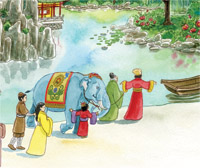Children's books have found a new niche that renders them an effective educational tool as well as a real piece of entertainment. I've found several along the way and it amazes me how an author can turn education into fun. Kids want to read books like this, but the key is making them interesting, appealing to the visual and mental senses, and capturing their full attention. Here is a bit about Kell Andrews's experience in developing MIRA FORECASTS THE FUTURE.
Mixing Science Fact and Fiction in Mira Forecasts the Future
I was looking for a fun way to write about the sciences, and I thought of the weather. I love kids nonfiction, but I’m a fiction writer. I brainstormed a way to build a story around it, and that story turned into MIRA FORECASTS THE FUTURE.
When I was growing up, my family was obsessed with the weather, and once we got cable, we watched The Weather Channel every night. Until then, the weather had just been a few square inches of the newspaper or a few minutes of the nightly news. We had a thermometer, barometer, windvanes, and rain gauges, but I didn’t forecast the weather myself -- it was more of a spectator sport.
It doesn’t need to be. Children can observe and track the weather with very few tools -- just a thermometer and their own eyes. And with easy availability of weather apps and satellite photos, they have tools at their disposal that Mira never dreamed of.
Turning Weather into a Story
 |
Kell Andrews, author
Mira Forecasts the Future |
So how to make weather forecasting work in fiction ? It occurred to me that predicting the weather is a real-life way of predicting the future using science, and I noticed how interested my own children were in the little paper fortune tellers they folded and made.
From there I came up with Mira, an inept fortuneteller turned weather wonder girl whose predictions her whole beach town comes to rely on. New to fiction/nonfiction hybrids, I studied a lot of texts, and one I liked a lot was Lemonade in Winter: A Book About Two Kids Counting Money, by Emily Jenkins, illustrated by Brian Karas. So I wrote the weather information as backmatter.
Later, when I was working with Sterling Kids, editor Zaneta Jung asked my to incorporate the factual information into the story, and illustrator Lissy Marlin turned into a visual in the middle of the book as Mira researches in the library before she tries her own hand at meteorology.
I hope readers get inspired by Mira’s love of weather -- whether they make their own predictions or get fascinated by another area of science. There’s so much kids can do now to learn about and participate in science -- it’s much easier to forecast the future if you start working towards it now.
May be purchased at Barnes & Noble
About the book: Telling the future is a gift: you either have it, or you don’t. And Mira, daughter of the famous fortune teller Madame Mirabella, just doesn't. When Madame gazes into the crystal ball, magic swirls. When Mira looks . . . nothing. Then one day Mira gets a pinwheel and a windsock, she finds her own form of “magic” in the science of predicting the weather—and saves the day for everyone! This engaging tale, with a fun touch of science thrown in, helps kids understand that we all have our own special talent.
GIVEAWAY
Begins June 22
ENDS July 13 @ 12:01 a.m. EDT
Open to USA & CANADA addresses only.
DISCLOSURE: This guest post was provided by Sterling Children's Books an imprint of Sterling Publishing on behalf of the author, Kell Andrews, to promote this book. I was not compensated for posting this review.
NOTE: This story does incorporate the skills of Mira's mother, Madame Mirabella, who is a fortune teller at the beach and Mira bemoaning the fact that she does not have the fortune telling skill as well. I appreciate Mira's discovering points about predicting the weather and it makes for a cute story.
































